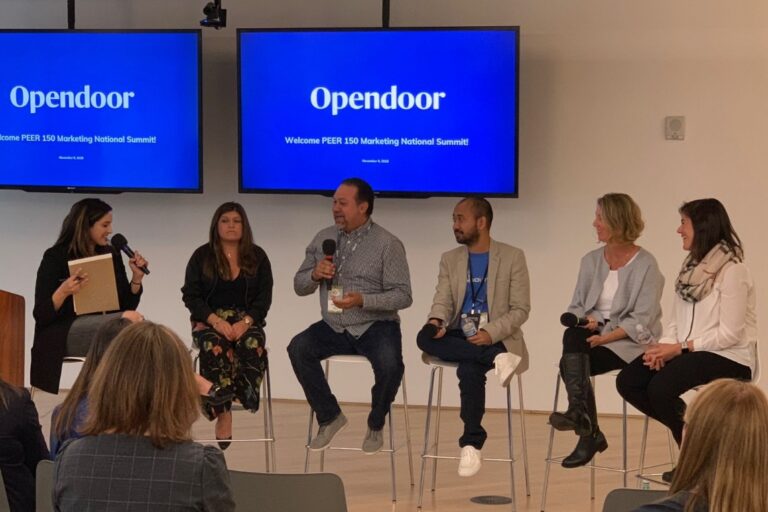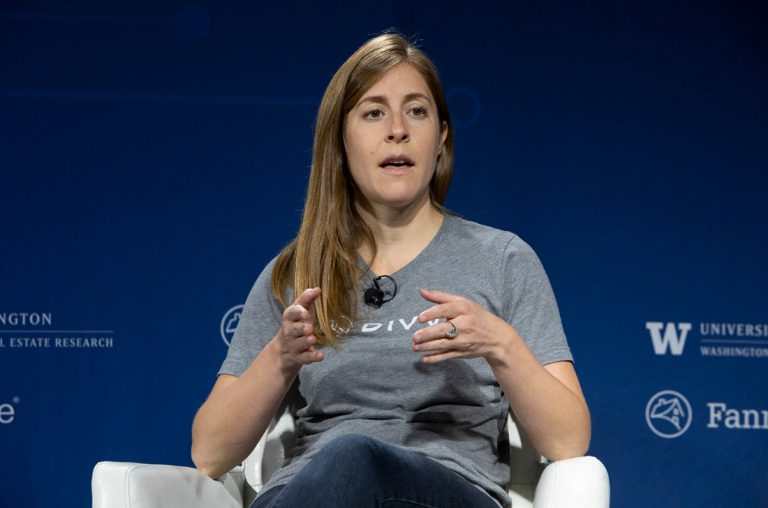Snapdocs on Defragmenting an Old-Fashioned Ecosystem
The “closing” is the final step in the process of purchasing and financing a home. The “closing,” also known as “settlement,” occurs when you and all other parties involved in a mortgage loan transaction sign the required documents.
Since the outbreak of the pandemic, technology has been critical in guaranteeing business continuity in nearly every sector. Traditional mortgage lenders, on the other hand, have taken a slow and steady approach to embracing the latest advances.
As conditions and consumer expectations evolve, digital and accessible mortgage processes are increasingly becoming a must-have, and Snapdocs appears to be one of the best alternatives on the market right now. The company is a mortgage technology company that helps real estate participants close deals by integrating and automating processes.
When the film is on screen, the director deserves praise too. Aaron King founded Snapdocs in 2013 and has led the company since its inception. But in fact, he has been in the mortgage landscape for ages, before starting his Snapdocs.
Young Entrepreneur Bootstrapping His Business
King is not an ordinary entrepreneur in a technological startup. He got his start in mortgages as a notary while still in high school. He’s been in the industry for 23 years and his early startup attempts were focused on a single component of the obstacles he knew firsthand: he saw a possibility to leverage technology to sort out notarized signatures in a legal, orderly, and faster manner.
He then dug deeper into the possibilities of how technology could be deployed to improve the overall process, which is how Snapdocs was born.
Typically, we see entrepreneurs with diplomas and degrees, but King did not graduate high school or college. Growing up, he had a thousand questions for the people he looked up to as role models about how they’d attained their goals.
He is convinced he can learn more from intentional conversations with the right person than he would have in semesters of school or by reading every book on a topic.
Unlike every company that is in shortage of cash with a craving for snapping a huge fortune from investors, King decided to raise minimal funding in the pilot days of Snapdocs.
Talking about this decision, Aaron King stated that, “I never considered funding to be a requirement for building — but I also didn’t know much about fundraising early on in the company’s history.”
Snapdocs began as a side project several years before considering submitting to YC. When King applied, his company already had a real product, customers, and revenue. Even after YC, they didn’t raise much money right away. They stayed focused on construction before raising a seed round later in the year.

Dealing with the beginning stages without much money, King’s understood that businesses should take the same tackle even when you do possess the money to be less disciplined.
His only alternative back then was ruthless prioritization. Snapdocs couldn’t afford to create features that weren’t absolutely necessary. A hundred diversions would always result in a broader, less concentrated product.
But capital constraints kept them focused on going deep with paying customers. This allowed them to avoid the typical pitfall of building things that no one desired.
It also meant that when they decided to construct a product, they had to consider the smallest version possible in order to ship promptly. That helped guarantee they had a short feedback loop from consumers and ensure resources were constantly being invested in building the right features.
Being capital constrained drove them to engage in positive behaviors that served them well even after they obtained additional funds. They continued to consider every dollar spent and particularly prioritize the development of their product. They strived to make their product to be a real deal, not just illusions.
King is obsessed with actual results, rather than how to achieve them. He shared, “In the product world, I often see people get so caught up with frameworks and methodologies and documentation that they lose sight of what they actually want to do.”
With that in mind, he has successfully architected a product that’s going to be a mainstream instrument for the mortgage industry.
Digital Mortgage Closings – More Seamless Than Ever
Most eClosing technology is not designed to provide benefit to all parties rapidly. This implies that lenders invest a lot of time and money developing eClosings only to achieve a small Return on Investment (ROI) or never reach full adoption.
It wasn’t until the pandemic that people began to pay attention to this issue. At the time, regarding home sales surging, and interest rates near all-time lows, leading digital mortgage platform company Snapdocs finally got the attention that it deserved.
Snapdocs is a cloud-based suite of tools that connect all stakeholders engaged in mortgage closing in order to simplify the process across all types of closings.
It is the most comprehensive solution on the market, bringing together lenders, settlement agents, title firms, borrowers, notaries, and others online to finish more deals at a cheaper cost.
The company’s solutions encompass the largest real estate notary network in the market, a signing and scheduling solution for title and escrow firms, plus a digital closing platform for mortgage lenders and their settlement partners.
“Like us they are on a mission to defragment an ecosystem,” King said, referring to it as a “perfect complement” to Snapdocs’ own efforts.
Snapdocs is not talking about its valuation. Its founder and CEO stated in an interview that he believes disclosing is nothing more than “grandstanding” — which seems fascinating given that the industry he focuses on, real estate, is centered around public disclosures of valuation.
The core idea of Snapdocs is that buying a house necessitates not only a lot of documentation but also a lot of different parties being on the same page, so to speak, in order to set the wheels in motion and close the purchase.
There is not only the mortgage (with its various parties) to resolve; there are also real estate brokers and agents, home sellers, inspectors and appraisers, insurance companies, title companies, and others – a total of 15 parties.
Because of the complexity of all of them working together in a timely and efficient manner, the process of purchasing and selling a house can be lengthy and costly. And that’s before the pandemic, with its problems connected with social isolation and remote employment, hits us.
Snapdocs’ approach has been to establish a single cloud platform that helps handle the papers required by all of these different parties, offering data access and the ability to flag or approve items remotely to speed up the process.

It has also designed a variety of features that employ AI technology and analytics to help spot potential issues early on and fix them.
Given how enormous the real estate market is, it’s the world’s largest asset class, according to many estimates. And given how many IT industries to have “disrupted” the scene over the years, it’s surprising that so few have attempted to fix it.
One of the reasons, it appears, is a lack of overlap between computer specialists and mortgage experts, and Snapdocs is a testament to the benefits of establishing a firm specifically around a difficult topic that people happen to know very well.
To survive in the environment right now, companies have to leverage AI as a way to keep up with the unstoppable changing world. Snapdocs is not an exception, in fact, the base of its solution is pretty much extracted from AI.
Hidden Catalysts for Its Stunning Success
Initially, the company employed Amazon Web Services (AWS) technologies to create tools that allowed title companies to book and manage notaries for mortgage-signing appointments across the country.
Snapdocs’ AI capabilities have since been developed to provide automation, accuracy checks, and security controls throughout the mortgage-closing process.
“The traditional mortgage-closing process can take as long as 60 days and cost upwards of $6,000—and that’s only if no errors are discovered along the way,” says Briana Whelan, head of product for Snapdocs.
She added, “We saw an opportunity to use AWS to build a solution that could help lenders and title companies both operate more efficiently and provide the digital closing experience their customers are increasingly demanding. The Snapdocs platform now processes one million transactions annually, a scale that never would have been possible without AWS.”
Snapdocs toolkit, in a nutshell, strives to reduce manual mortgage processes by digitizing them whenever possible. It automates signature scheduling and manages payments totaling more than $4 million every month, all while centralizing critical information such as order history, signer, and notary documents on a single site.

Clients can send new orders, upload documents, and check progress using white-labeled dashboards created by signing agents. Those same agents also receive the backend information, including a list of clients that make the maximum profit.
The platform has a database of 60,000 notaries that may be searched using an algorithm. Notaries manage and upload their documents to a secure portal from which they can schedule signings on third-party calendars. They can also choose which companies can contact them for fresh signing chances.
The company’s document processing technology turns PDFs into files with electronic signature fields, allowing signatures from a PC, tablet, or smartphone. This is significant in the real estate market, because loan packages can span 150 to 200 pages with electronic signature sites scattered throughout.
Snapdocs’ AI algorithms determine which pages may be signed electronically and which require ink, then they detect where electronic signature tags are required and apply metadata that describes the tag type (signature field, checkbox, for example). Notably, these systems also detect potential documentation flaws and inconsistencies.
According to the closing middleman, its automated technology can prepare loan documents with hundreds of pages in 11 minutes. Furthermore, the platform can automatically categorize and mark closing e-signature packets in under 30 minutes using AI.
The company also claims that its products are currently utilized in more than 13% of all residential mortgages in the United States, amounting to more than $400 billion in yearly transactions. The company states to serve roughly 70% of the settlement industry.
Snapdocs’ enormous real estate professional network serves as the cornerstone for their AI-enabled digital closing platform. Snapdocs may deploy AI to swiftly evaluate vast swathes of information for insights into areas such as compliance risks, team procedures, and document errors because all closing partners, documents, and relevant data are housed in one cloud-based service.
The company has announced a number of new AI-enabled capabilities, bolstering its unique ability to provide all parties with a fast, error-free closing.
The platform now classifies and annotates whole closing packages for eSignature, including standard and custom lender documents, all title documents, and all security instruments.
It’s not bragging to say the company is the only platform that can serve lenders in an unlimited volume for any type of closing, with any settlement partner, in any county, in minutes. The new cash will help the platform’s ongoing product innovation.
The epidemic has forever altered the real estate market. We’ve long discussed digital closings, but the tremendous confluence of global and market factors has driven everyone to finally adopt digital solutions that solve the basic challenges in a closing: the fragmentation and inefficiencies inherent in such a large operation.
The pandemic was also a watershed moment for Snapdocs, as the company entered its golden period. It is well reflected in its financial performance, so let’s continue reading.
Snapdocs to Enter a Growth Tear
One of the first funds that Snapdocs ever raised was in 2014, when the mortgage closing platform snapped in $3M in a Seed round from Accelerator Ventures and 5 other investors. This initial cash helped them to build their business.
It wasn’t until three years later that they raised their Series A in 2017 with $15M. This round noted an important turning point as they got more money to scale up their model.
In late 2019, Snapdocs raised $25 million in a Series B to further improve artificial intelligence on its mortgage processing platform. The San Francisco-based startup provides software that enables the various parties involved in arranging a mortgage to interact, with the goal of simplifying the process.
In 2020, when home sales surged, and interest reached near all-time lows, leading digital mortgage platform company Snapdocs announced $60 million in new funding. This Series C comes less than 12 months after raising $25 million and serves as a massive endorsement of its vision and work to simplify the mortgage closing process online.
Snapdocs has grown significantly in 2020 through supporting the mortgage industry’s move to digital closings. In August 2020, when home sales were at their highest level since December 2006, Snapdocs powered approximately 170,000 closings, nearly 15% of all deals done nationally that month and approximately $50 million in transactions.
Of note, the company will surpass 1.5 million closings in 2020, more than doubling its volume from 2019.

Under King’s leadership, Snapdocs’ growth has soared, with the number of lenders using the Snapdocs Digital Closing Platform increasing by more than 700% in the last 10 months from October 2019 to 2020. To accommodate that growth, the company has also quadrupled the number of employees.
The company’s progress under King’s leadership has been recognized throughout the industry. Snapdocs was selected a HousingWire Tech100 winner in 2020, and The MReport dubbed the company a Top 25 Fintech Innovator.
Coming on the heels of the successful year 2020, Snapdocs announced that it raised $150 million in Series D funding in 2021.
The new funding round will accelerate Snapdocs’ vision of building the digital infrastructure that connects lenders, settlement services, and borrowers together to digitize mortgage closings at scale.
This funding round was led by Tiger Global with participation from Sequoia, Y Combinator, F-Prime, Maverick, Alkeon, and Wellington Management. And it brings Snapdocs’ total funding to $260 million and increases valuation to over $1.5 billion.
Snapdocs is now the mortgage industry’s top digital closing platform. Today, the corporation is involved in 25% of all real estate transactions in the United States. Every day, over 90,000 mortgage professionals rely on Snapdocs to automate tedious work and digitize inefficient paper procedures.
The eClosing Mortgage market has been thriving in recent years, and the sector appears to be on the increase in 2023, despite the economy’s troubles. Snapdocs already published a study on this issue.
Winning Avenues for Mortgage Lenders
According to Snapdocs, mortgage lenders can save more than $400 per loan by employing eClose technology to digitize and automate the mortgage closing process.
This research on March 2023 confirms this savings potential across all digital closing forms including hybrid, hybrid with eNote, and full eClose (also known as Remote Online Notarization, or RON).
Based on Snapdocs research, lenders can save more than $110 per loan with hybrid closings, in which the borrower previews and eSigns the majority of closing paperwork.
Snapdocs revealed that when the promissory note is also digitized (hybrid with eNote), typical lender savings nearly triple to $290 per loan – and when the mortgage closing process is fully automized with eNote and RON, lenders can save $400 or more per loan.
These potential savings come at a time when margins remain tight, and lenders prioritize cost-cutting strategies.
“We are trying to adjust for dramatic margin compression and are focused now more than ever to find opportunities to improve our profits,” said Jen Bailey, Closing Department Manager at Gold Star Mortgage Financial Group, a Snapdocs customer since 2022.
She added, “Digital closings with Snapdocs made our business more efficient and the entire loan process easier for our borrowers, as well as all those involved in the closing, post-closing, and collateral departments. Ultimately, Snapdocs has already helped us shave hundreds of dollars off of each loan, while shortening the closing cycle and delivering a better customer experience.”
Snapdocs’ study is unique in that it defines the true drivers behind each savings potential, allowing lenders to make significant changes to their technology strategy. In line to the survey, as the transaction gets increasingly computerized, the average gross savings per loan climbs dramatically.
This is due in large part to procedural efficiency and reduced errors during the loan manufacture and closing process, as well as shorter secondary market funding cycle times.
While the report focuses on the quantitative effects of digital closings, other significant benefits include increased borrower and employee satisfaction as a result of a smoother lending experience.
“In the current market, the entire industry is focused on reducing costs,” said Aaron King, Founder and CEO of Snapdocs.
He added, “Our research confirms what a growing number of lenders already know—eClosing is critical to any mortgage strategy to remain competitive and improve margins. The lenders that implement eClosing technology today will be the ones driving progress and innovation in our industry when the market inevitably bounces back. Transitioning to digital closings is the single best investment for processing loans faster, more efficiently, and at a higher profit. “
Bottom lines
After the toughest year in the past ten years that defined by rounds of layoffs and rising interest rates, most in the mortgage industry recognize that last year’s challenges will carry over well into 2023.
For much of the industry, 2023 promises yet another period of retrenchment as businesses adjust to new economic realities following the end of the two-year mortgage boom that began in 2020.
Over the next 12 months, mortgage experts anticipate a likely recession, ongoing inflation, and falling mortgage demand as key themes, all of which point to a decrease in business. However, there are signs of hope, particularly in mortgage technology, which appears to be growing despite the hard environment.
Snapdocs is not the only player in the game right now. Each company has a mission to improve the industry. Snapdocs’ goal is to perfect mortgage closings. If they are successful, more than five million families will gain simplicity and openness as they make the most important financial choice of their lives: purchasing a home.
Let’s see how the mortgage closing platform executes that mission in the ecosystem that’s getting hotter.









